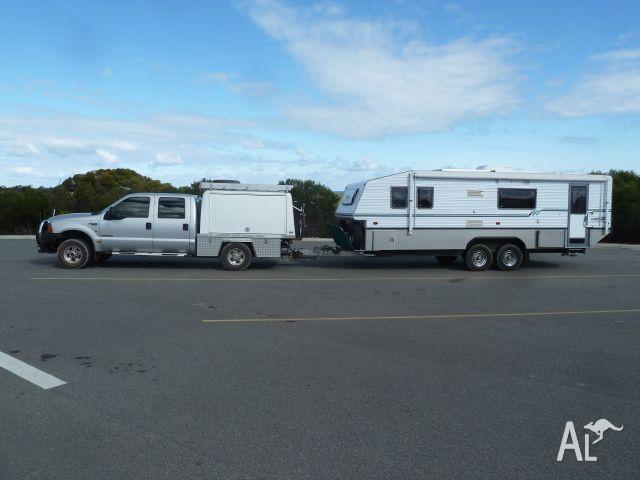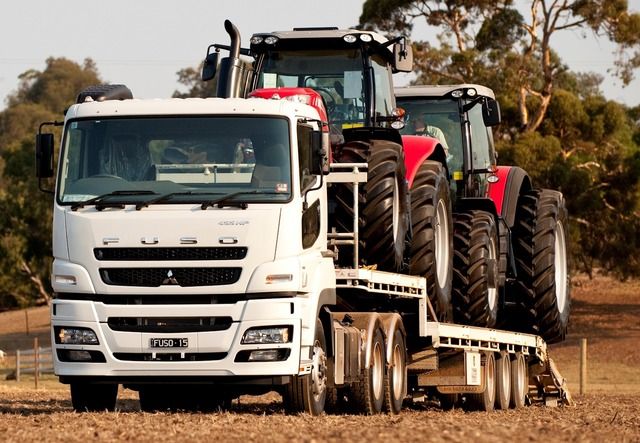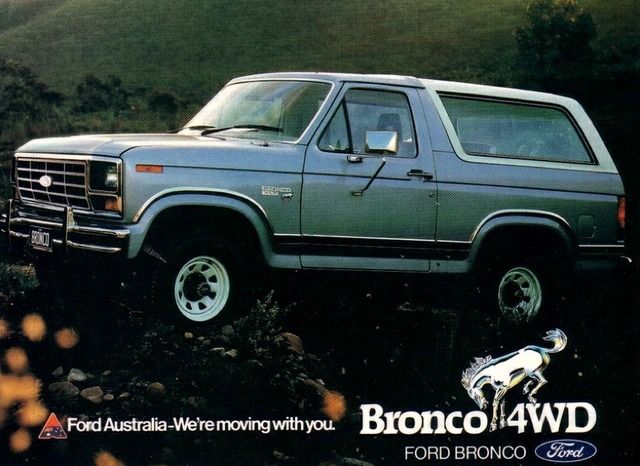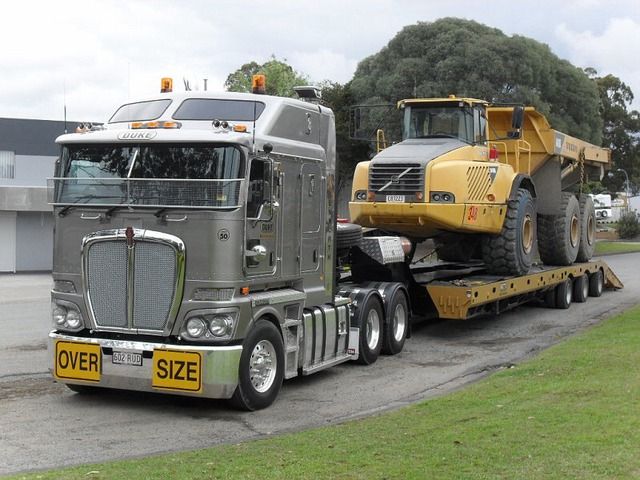RobertRyan
Jun 12, 2015Explorer
Yes F350's were built in Australia
Many might think that U.S. HD Pickup Trucks are a recent or unknown quantity in Australia. That is not the case. Unfortunately here they were released at the wrong time or used for the wrong purpose.
In the 1970's Ford built F250/350's in Australia. Not a great number were sold, as Ford it appears had peculiar ideas on how to market them.Later Ford tried again with the Brazilians built Ford F 250
Strangely never sold as being used as a tow vehicle, , but as a "Big Ute" very odd

In the 1970's Ford built F250/350's in Australia. Not a great number were sold, as Ford it appears had peculiar ideas on how to market them.Later Ford tried again with the Brazilians built Ford F 250
Australian productionEdit
Ford Australia assembled right-hand drive sixth generation F-Series that were fitted with a lineup of locally sourced engines.
1973-1975Edit
Initially they were available with US sourced 240 and 300 CID Straight-6 engines. From August 1974 the 240 CID engine was replaced with locally sourced 250 CID Straight-6 and the 300 CID was replaced by the locally sourced 302 Cleveland V-8 engines. The 302 Cleveland was a destroked 351 Cleveland built using tooling exported to Australia after the closure of the Cleveland production line.
1976-1977Edit
The 250CID Straight-6 was upgraded with a new crossflow head and rebadged as the 4.1 litre, increasing power and lowering emissions to meet new legislation being introduced.
1978-1979Edit
In 1978, the 351 Cleveland V-8 replaced the 302 Cleveland in the F-250 and F-350. The 302 Cleveland continued alongside the 351 Cleveland in the F-100. The 4.1 litre continued to be sold across the range. In 1979, the F-250 and F-350 had an automatic gearbox as an option for the first time in Australia.
Buying Used: Ford F Series Pickup (2001-2008)
If you need to tow a hefty boat or horse-float, the F-Series Ford pickup has to score a place on your list of possible purchases. Recent versions are expensive due to RHD conversion requirements, but back-tracking five to 10 years will reveal F-Series that were sold new through local Ford dealers and in surprising numbers. Most were the heavyweight F250 but there was also a ‘grey’ market dedicated to importing selected versions of the lighter and more manageable F150.
HISTORY
For some Australians, their first ride in an F-Series Ford may not have been by choice. Over several decades, the rugged F100 and F250 worked as ambulances or police ‘paddy wagons’ and some still serve as emergency vehicles in remote parts of the country.
In 2001 Ford began building RHD versions of the F-Series in Brazil and the local operation was quick to pounce. From November 2001, Ford showrooms across Australia had to make space for the substantial F250 and the even larger F350.
Australian-spec F250s quickly bounded to the top of their market: 2329 F250s were sold during its first full year on the market, supplemented by 151 F350s.
In 2006, when direct imports ended, almost 1000 two and four-wheel drive versions were still being sold at prices that had moved only marginally upwards from launch.
Cheapest among the new arrivals were cab/chassis F250 XLs, some with four-wheel drive that could be equipped with simple trays or more specialised bodywork. At the top of the F250 tree and intended for family and business use were the 4x4 Super Cab and Crew Cab versions, which cost between $62,000 and $80,000.
Super-Cab ‘Effies’ came with occasional rear seat accommodation accessed via narrow, rear-hinged doors. The Crew Cab with its four front-hinged doors had a more substantial rear seat and generous leg-room. Even the standard XL provided a generous platform behind the seats where baggage or work equipment could be securely stowed.
Engine choices began with a 4.2-litre turbo-diesel six-cylinder fitted only to XL models, a 5.4-litre V8 that was standard in rear-wheel drive 250XLTs, and the 7.3-litre turbocharged V8 diesel available in 250XL and XLTs. Most had a four-speed automatic transmission but a six-speed manual was available in 4x4 versions.
From 2005 the F-Series incorporated some relatively radical changes, including a boxed frame with nine times the torsional stiffness of the previous chassis. The adoption of front coil springs on all models and wider rear springs with repositioned shock absorber mountings contributed to improved ride when unladen.
F150 models were not officially imported but were available via organisations that held permits to import and comply high-end variations. These special ‘commemorative’ editions included the supercharged Harley Davidson Anniversary model and the short-wheelbase Lightning.
In addition to distinctive paint and improved trim levels, these F-Series variants were among the most potent vehicles of their time. In 2003, the Lightning officially became the world’s fastest production pickup when it averaged 237km/h in Guinness Book of Records testing.
ON THE ROAD
F250 Fords are some of the largest vehicles you can legally drive on a car licence and familiarity with their width and length can take time to acquire. However, once you’re comfortable with the huge amount of metal around you and the space needed to manoeuvre one of these monsters, the experience becomes akin to driving a large and reasonably luxurious car.
Most have cloth-trimmed front seats; either a bench or high-back buckets with a generous centre console. The dash, even in performance versions, is bland for a vehicle that attracted the Luxury Car tax when new. The back bench in Extra Cabs is more of a platform than a seat; uncomfortable even for short distances and designed to be folded against the rear bulk-head to provide extra storage space.
Rear seating in Crew Cabs is upright but okay for three people over a limited distance. There are no head restraints, though, nor do F-Series come standard with child-seat mountings, so these will need to be installed if you want to accommodate very young passengers.
Ford’s dedication to a hefty steel chassis and leaf springs did nothing for handling or stability, especially on rough roads. Even the more refined coil-sprung versions still crash and leap over bigger bumps.
However, the vast majority of F-truck buyers will be far more interested in how well their Ford tows a big boat or ‘fifth wheeler’ than chasing hot hatchbacks through challenging curves.
Post-2004 models turn a little better than those with leaf-sprung front ends but still have a turning circle of around 14 metres. ABS braking is standard, but in XL versions works only on the rear wheels.
Power from the 7.3-litre diesel was an apparently-mild 175kW – 19kW less than the harder-revving 5.4-litre petrol – but torque was a robust 684Nm and available from 1600rpm.
4.2-litre motors don’t share the diesel V8’s massive output but still do a decent job of powering work utes and towing up to 3.5 tonnes.
Fuel consumption is horrific, when pushing one of these heavyweights hard. Even the small diesel will use 15L/100km when laden and the 7.3-litre can churn through 25L/100km when raising a sweat. Under these conditions, the standard 144L tank will last only around 400 kilometres, leading outback travellers to recommend extending tank capacity to a minimum 270L.
Truck fans who want more thrills than the down-to-business diesels should look for an F150 Lightning. These 282kW 5.4-litre V8-powered beasts come standard with wide alloy wheels, Bilstein suspension and upgraded brakes.
Strangely never sold as being used as a tow vehicle, , but as a "Big Ute" very odd








